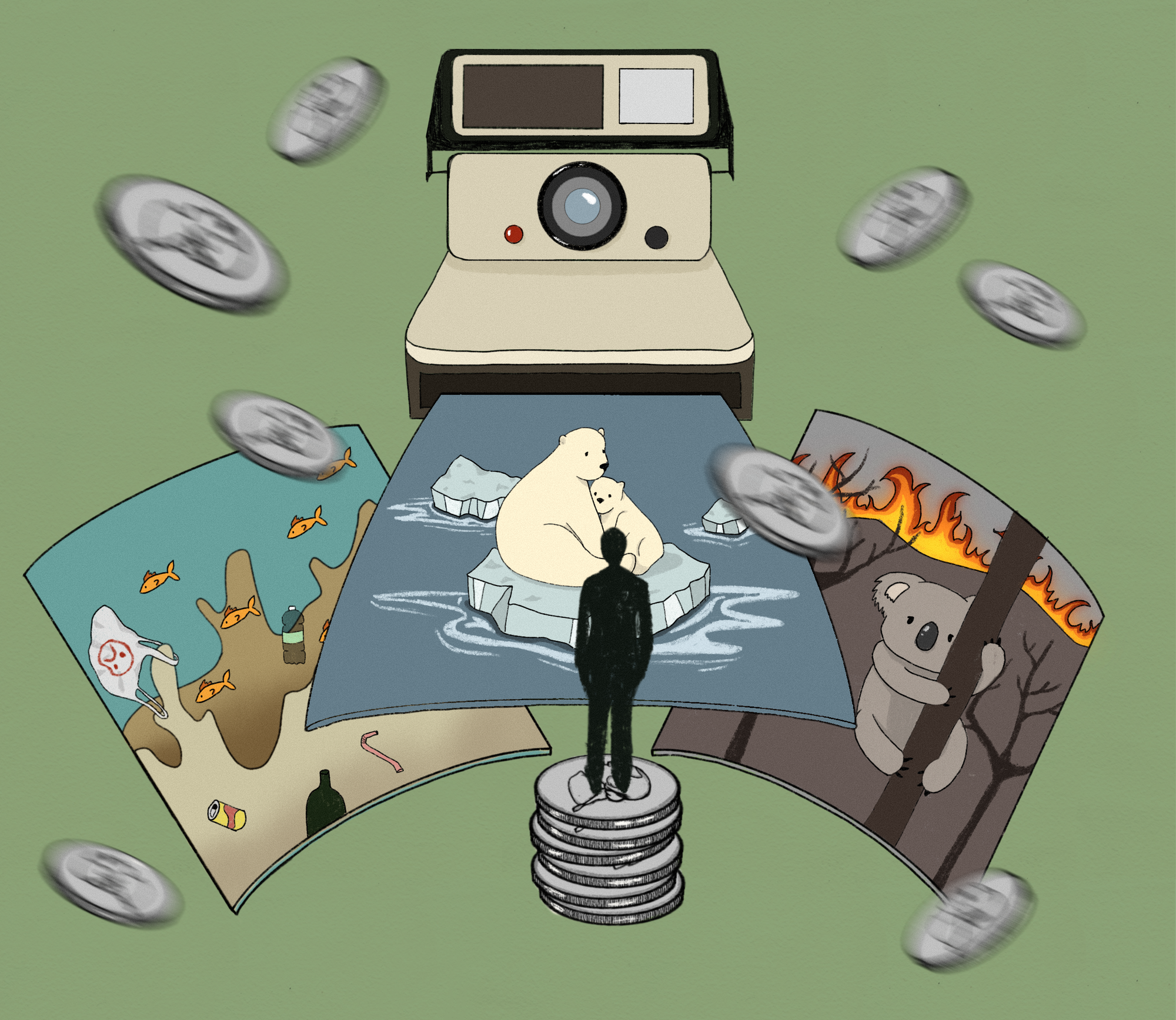Researchers examine effect of photographs on caring about biodiversity, charity

(Amber Lee/Daily Bruin)

By Leila Okahata
Feb. 26, 2022 3:32 p.m.
Researchers found that photographs can motivate people to care more about biodiversity and donate to environmental charities.
In a study published Feb. 3, researchers from UCLA, Johns Hopkins University, Brown University, University of Wisconsin-Eau Claire and UC Santa Barbara found that the costs of declining biodiversity can be hard for most people to conceive, and as a result, investigated ways that could make them more tangible.
Hunter Gehlbach, the lead author of the study and vice dean at the Johns Hopkins University School of Education, said the human mind is wired to perceive and be alerted by immediate threats such as hearing alarming sounds. But threats with gradual, long-term changes such as climate change and the loss of biodiversity are more difficult to perceive, he said, adding that it is hard to visualize a high number of species slowly shrinking to extinction.
“Many of the species that we’re losing we have not even discovered in the first place, and so no wonder people aren’t very dialed in or (can’t) register that problem,” he added.
The researchers tested whether photographs could bridge that psychological distance of abstract ideas such as biodiversity loss through their vivid and concrete nature.
Study participants took a five-question survey that measured how much they valued biodiversity, which included questions such as, “How important do you think it is for humans to take action to make sure that endangered species survive?” For one group of participants, each question was paired with an image related to biodiversity, such as a man feeding a sick baby elephant or a polar bear mother and her baby on a shrunken iceberg floating in the sea, Gehlbach said.
Results showed that participants who viewed the photographs valued biodiversity more than participants who were not shown the photographs. Additionally, participants were given the option following the survey to donate to The Nature Conservancy, Save the Children or the American Cancer Society. Participants who viewed the photographs donated more to the environmental charity than those who were not shown the photographs.
However, Gehlbach said these results could not be attributed to the photographs making biodiversity loss more tangible. Follow-up surveys, which asked participants questions regarding whether they thought they would be directly affected by climate change and biodiversity loss, showed that biodiversity loss remained a distant threat to the participants, according to the study.
[Related: UCLA-led study finds climate change as main factor for increased wildfire weather]
Although the researchers were not able to explain the effect of viewing photographs with biodiversity loss becoming more perceivable, they did find that emotions played an important role.
Participants who viewed photographs reported more feelings of sadness, guilt, worry, frustration and fear. Christine Calderon Vriesema, a co-author of the study and assistant professor of psychology at the University of Wisconsin-Eau Claire, added that negative emotions may be the driving force behind why participants who viewed the photographs valued biodiversity more and were more likely to donate to the nature-focused charity.
This contradicts psychological principles of human behavior, in which people are motivated to pursue goals that are important, useful and interesting but are demotivated by the costs of that goal, she said. But in the case of this study, viewing the costs – the loss of biodiversity – caused negative emotions that instead motivated participants, she said.
“It is almost like that negative emotion is functioning like an alarm,” she said. “(It heightens) their attention to the particular issue, which then might have (caused the) increased valuing and then subsequent desire to take action.”
However, photographs that elicit too intense of a negative emotion can depress and overwhelm the viewer, said Ursula Heise, a senior author of the study and the director of the UCLA Laboratory for Environmental Narrative Strategies at the Institute of the Environment and Sustainability. There has been a tendency since the 1960s to use images of disaster, dystopia and apocalypse to showcase environmental losses, but they evoke strong emotions that could paralyze viewers into inaction, she added.
“These negative emotions – when they’re maybe not at an apocalyptic or disaster scale (and instead) do confront you with individual scenarios of biodiversity loss – might actually have a use,” she said.
The study also investigated whether adding captions to these photos would bolster participants’ valuing of biodiversity. Another group of participants took the same five-question survey, but the questions were paired with photos that included captions. For example, the photo of polar bears had a caption that said the population of polar bears in the Southern Beaufort Sea has decreased by 40% since 2001 because of human activity and climate change causing sea ice to melt.
Unexpectedly, the results revealed that, although they did experience negative emotions, participants who viewed photographs with captions did not appear to value biodiversity as much as the photographs-only group. They also did not donate more than participants who had not viewed the photographs at all, according to the study.
Vriesema said the combination of photographs and captions may have induced intense negative emotions that overwhelm the viewer and inhibit them from taking action.
Such findings have implications for educators and journalists as there are effects in not only the photographs one chooses but also in the kind of captions put alongside them, Gehlbach said.
“The photographs might even be more powerful than the stories that go along with them,” he said.

